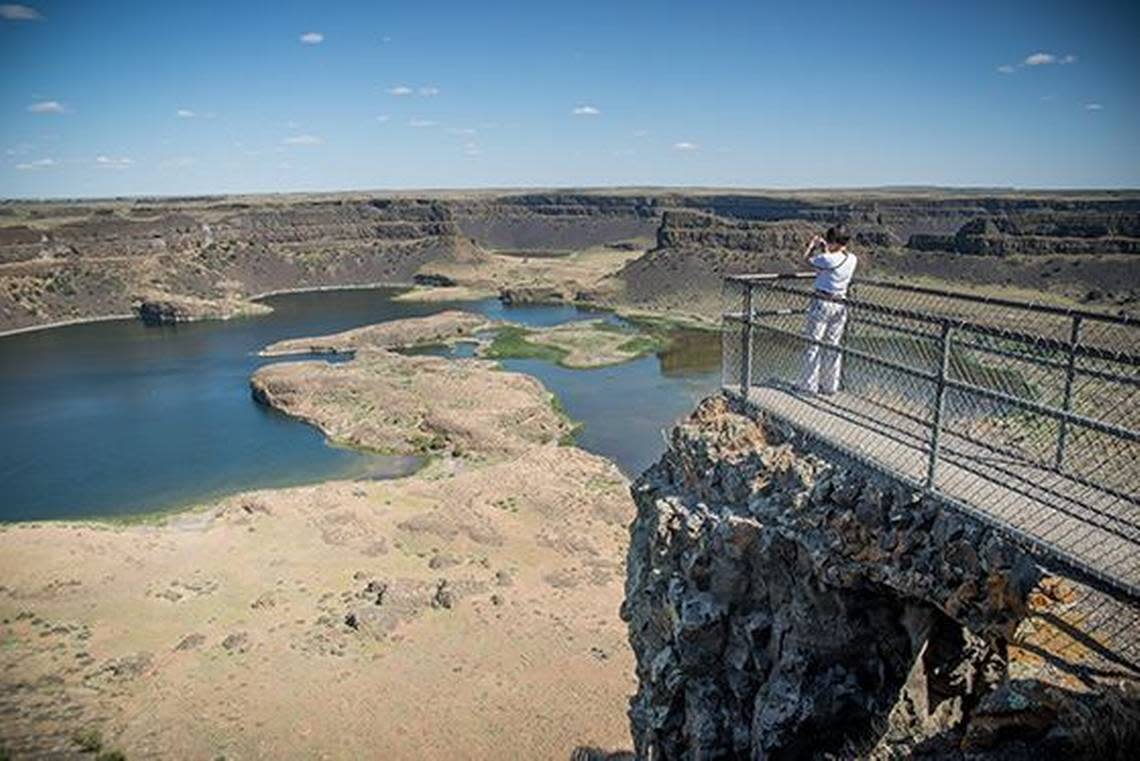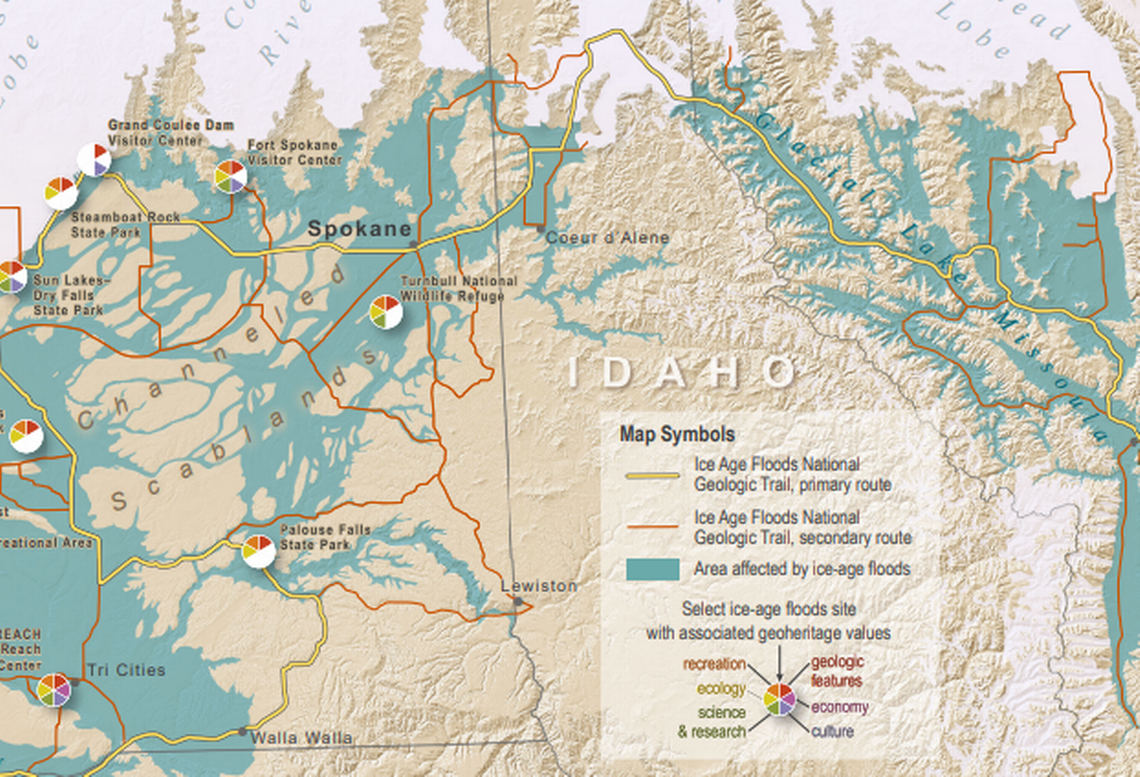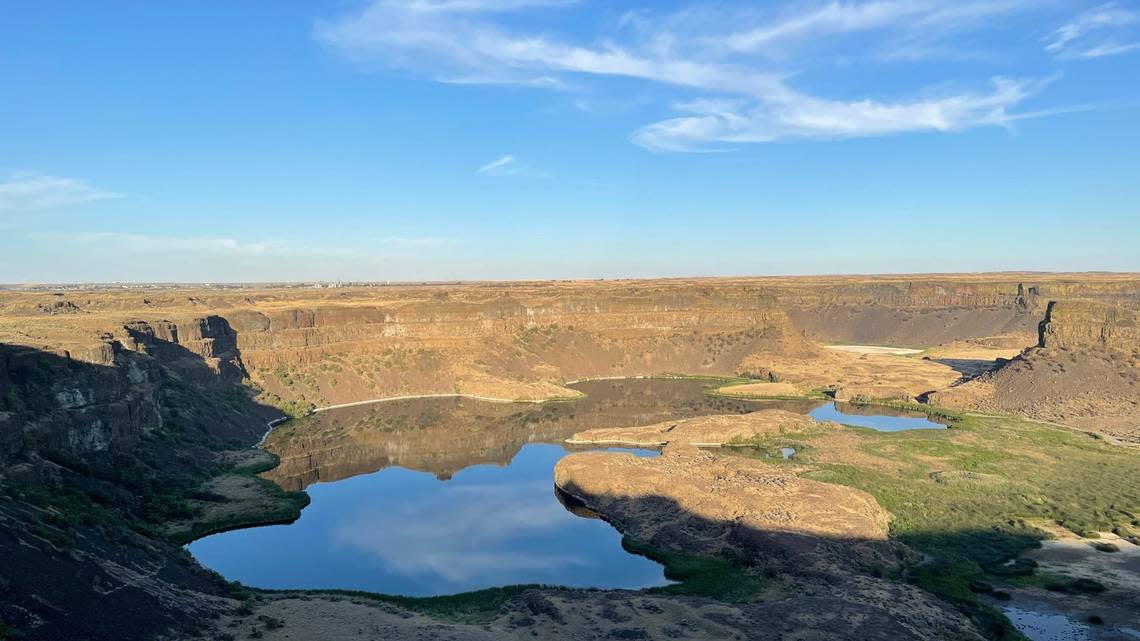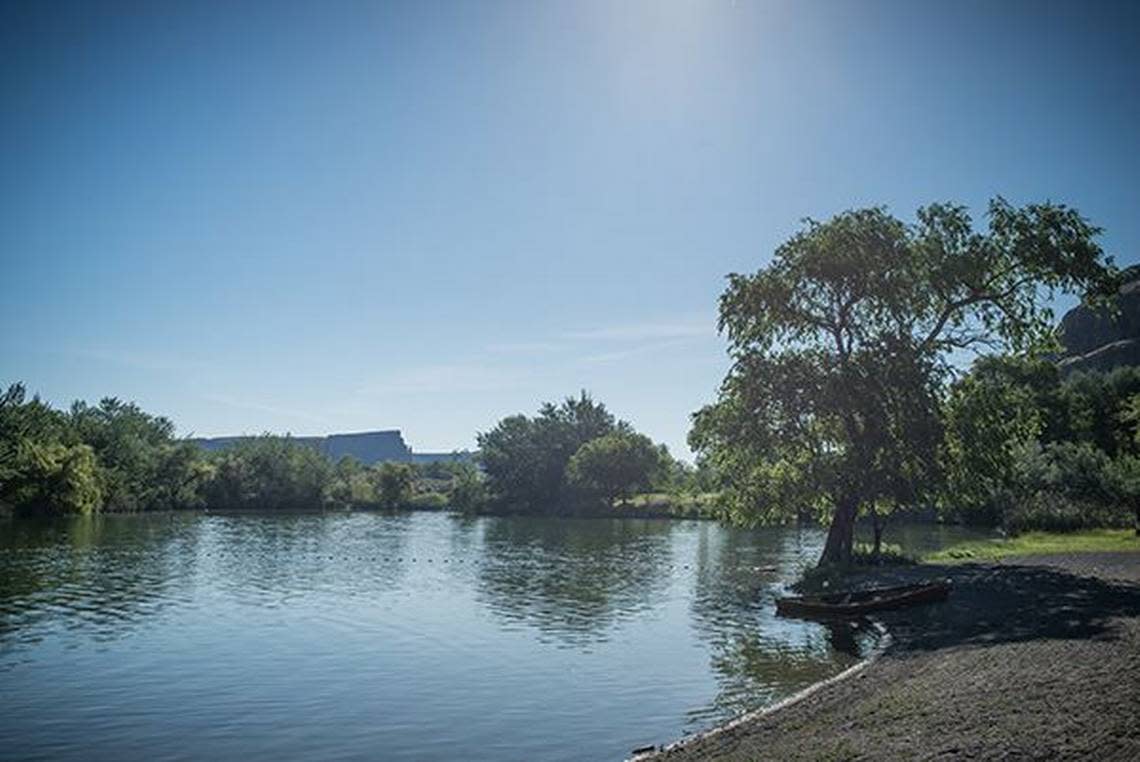E. Washington ‘geological wonder’ named one of Earth’s top significant sites. Why?
Eastern Washington residents may know Sun Lakes — Dry Falls State Park as a hidden treasure, but now the rest of the world is also getting a heads up.
The International Union of Geological Science, one of the world’s largest scientific organizations, has named Dry Falls as one of its first 100 notable Geological Heritage Sites worldwide.
The National Park Service calls it “a geological wonder of North America” carved by the Ice Age floods.
Where there was once a waterfall twice the height and four times the width of Niagara Falls, visitors now can stand on a 400-foot-high cliff to overlook a big sky and a landscape of deep gorges and dark, reflective lakes.
Dry Falls — at the heart of Eastern Washington’s channeled scablands of dry, connected flood channels and deep ravines — is the only Washington or Oregon site on the new heritage sites list.

The International Union of Geographical Sciences picked the site for its list because of its significant impact in understanding the Earth and its history.
The debate surrounding the origin of Dry Falls and the channeled scabland has had an important impact on the understanding of basic geological principals, according to the international union.
J Harlan Bretz theorized nearly a century ago that an ice age flood of near biblical proportions created the channeled scabland landscape of Eastern Washington.
His explanation of catastrophic flooding did not not conform to the geological dogma of his day that past geologic processes occurred slowly, and a bitter scientific battle ensued that lasted nearly 50 years.
But the scientific community gradually began to agree that an ice dam holding back the waters of Glacial Lake Missoula in present day Western Montana 18,000 to 15,000 years ago resulted in huge floods that carved out a new landscape.

The water rushing toward the Pacific Ocean eroded lava flows in Eastern Washington and created Dry Falls, the Grand Coulee and the Columbia River Gorge.
Visitors can check out the geology at Sun Lakes and Dry Falls State Park between Soap Lake and Coulee City and enjoy nearly 75,000 feet of freshwater shoreline at the foot of Dry Falls.
It’s 115 miles north of the Tri-Cities and 105 miles west of Spokane.
Visiting Sun Lakes — Dry Falls
Washington State Parks recommends starting with a visit to the historic Vista House Overlook, which offers panoramic views of Dry Falls.
The plunge pools surrounding the dormant waterfall are now home to a series of tranquil groundwater-fed lakes, an oasis for wildlife.

The park offers hiking on more than 15 miles of trails, interpretive programs, boating, paddling, swimming, golfing, miniature golfing, fishing and wildlife viewing. The campsite has 96 standard campsites and 41 full hookup sites, with reservations recommended.
Then stop and visit the Dry Falls Visitor Center, where indoor interpretive displays tell the story of the floods and their impact on Washington’s landscape and the early human history of the region, says the park service. The bookstore there offers information for those wanting a deeper understanding of the Ice Age floods story.
“I love watching people’s eyes look up, their mouths drop open, and then hearing them say ‘Dry Falls and the channeled scablands are so much bigger than I thought’,” says interpretive ranger David McWalter.
Admission into the center is free, but donations are accepted.
A Discover Pass is not required for parking at the Dry Falls Visitor Center. However, one is required within Sun Lakes — Dry Falls State Park.

There is an automated pay station for visitors to buy a one-day or annual Discover Pass and pay boat launch fees.
The park is also a notable site along the National Ice Age Floods Geologic Trail.
The Ice Age Floods Institute regularly offers field trips, hikes and presentations, providing opportunities for members and the public to learn about the ice age floods.
Other nearby attractions include Lake Lenore Caves State Park, located 10 miles south on Highway 17, and Steamboat Rock State Park, located 21 miles north on Highway 155.